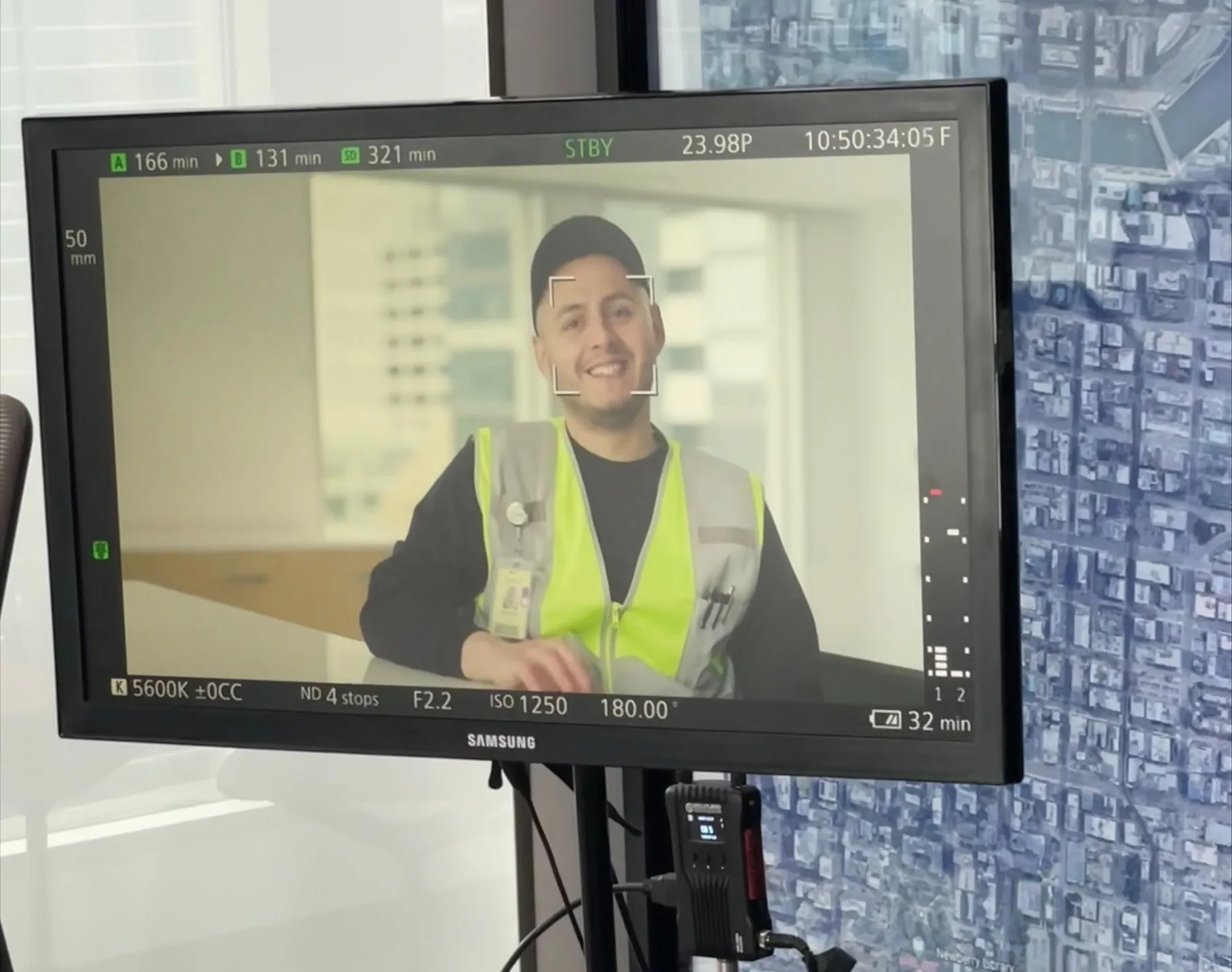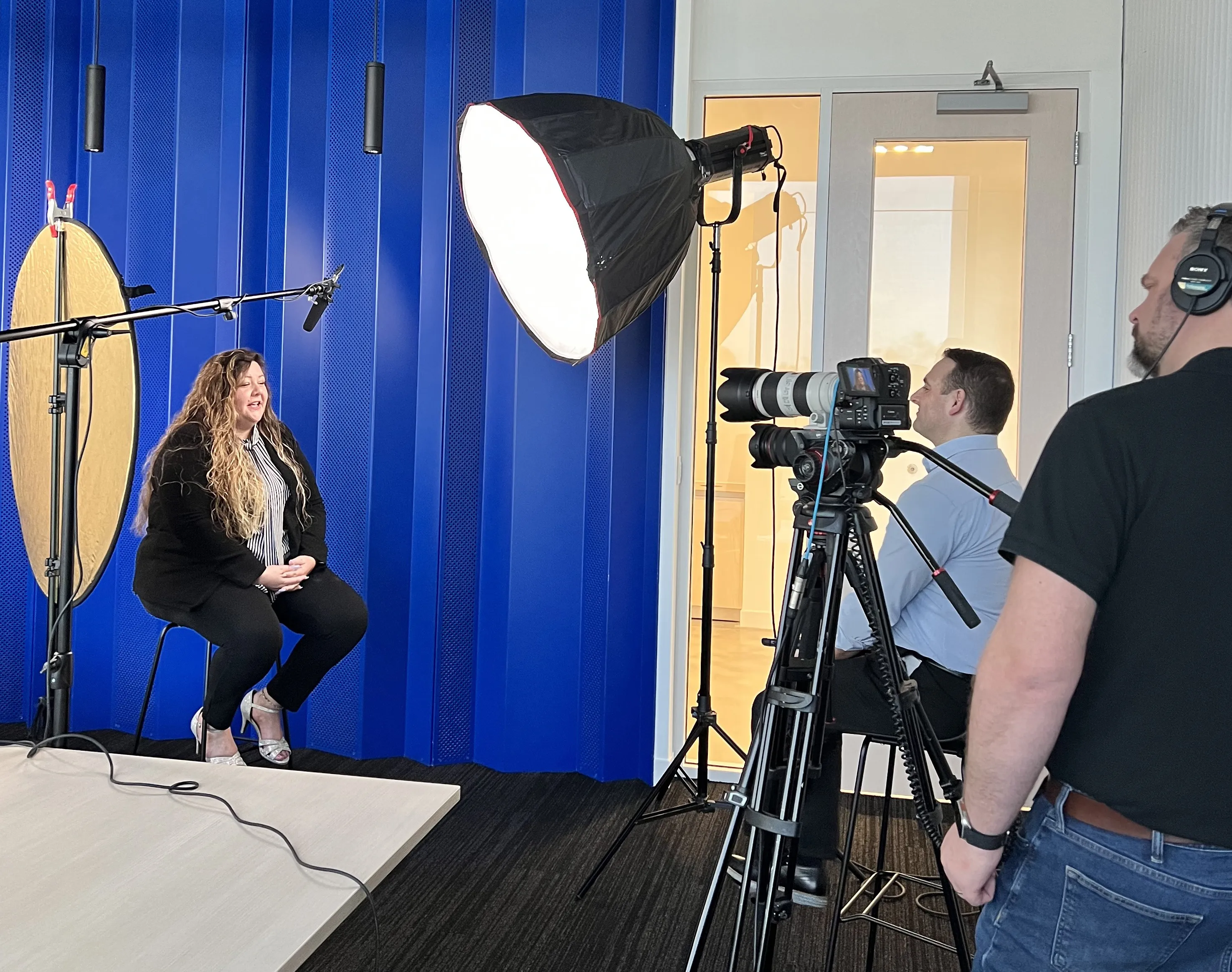What Should Your Corporate Video Strategy Include?
- Audience: Know your customers and clients; understanding how they consume content, like text, audio, and video, and what kind of content they prefer is essential to corporate video production.
- Objectives: Creating clear objectives is the best way to establish exactly what you want the video to achieve, as well as what its specific role is within the customer experience.
- Channel design: Creating content for specific channels, taking length, size, sound, background music, and style into account, in order to increase the potential for sharing within the platform and across other channels.
- Idea: Be sure to have a strong concept for your corporate video, otherwise you will find yourself going back and forth between ideas during the filming, wasting time and resources.
- Guidelines: Your video should reflect your brand, so ensuring that there are guidelines dictating how the video and its content are delivered is very important.
- Tracking: Define what you consider to be a success and track it accordingly. This measurement will give you a better understanding of the impact that the video had on sales and revenue.
Types of Corporate Videos to Engage Customers
- About Us videos: Videos for the “About” section of your website are a perfect opportunity to express your company’s history, values, and plans for the future. It can be used as a positive first impression, explaining why your company is the best and how it plans to help its customers.
- Emotional videos: Let your videos take your customers on an emotional journey. Any corporate video can be stiff and informational, but creating an emotional experience through the video will let the customers connect with you, your brand, and your story.
- Educational videos: Educational and learning videos are the most-watched videos on YouTube. Having a quick video that teaches people something new will increase engagement and awareness of what your company can offer. Is there something relevant that you can teach your customers? Put it in a video!
- Customer testimonials: Let your customers see how you have helped others. By hearing directly from previous customers, you are proving your credibility, professionalism, and quality to anyone watching the video who is interested in your product or service. People might not believe a website or employee, but they’ll believe past users.
- Video series: Creating a series of videos gives viewers a reason to keep coming back and watching. If you include the interesting topic to be discussed in the next video, it will encourage and entice your viewers to tune back in the next day or week that it’s released.
Know Your Strategy’s Purpose
We’ve likely all heard we need video in our marketing or internal communications strategy, but before we rush to create a ton of corporate video content, we need to ask ourselves, “Why are we doing this?” Is it because the industry experts told us video works? Is it because we want to create a really cool video of ourselves?
The first step - and I’d say the most important - is to clearly identify why you’re creating corporate video content. Do you want to show how a product works with a promo video? Do you want to attract more recruits with a recruiting video? Are you creating general awareness with a company overview video?

The reason knowing the strategy’s purpose is so important is because how you produce the video will change depending on the outcome you’re looking for. For example, if you’re looking to lure job candidates, a general, overarching company overview video might not be the most effective content. In that case, you’d probably want to speak more to how working here affects that candidate's life. In many cases, the more specific you are in defining your strategy’s purpose, the more successful you’ll be in achieving your intended outcome. If the purpose is simply “to sell more products,” try delving a little deeper. How will you do that? It could be, “We’ll sell more products by showing how these products have made positive changes in people’s health.”
Know Your Target Audience
This one might seem like the easiest element of your strategy, but’s often only executed with minimal thought. Knowing who is your target audience is more than just listing the audiences, such as “job candidates” in a recruiting video. Chances are, unless you’re a startup, you know your target audience extremely well. They’re your customers, your future employees, your current employees, etc. Think about what motivates them to listen. What catches their attention when you talk to them? Are they older? Younger? Do they consume their entertainment on network television or TikTok? If you’re still struggling to answer some of these questions, there’s a very easy way to garner this information: ask them.
Talk to a handful of happy, engaged employees and ask them, “Why did you apply here? What was it that convinced you to listen for more information? What is better about this job than what you hear from your friends who don’t like their job? How has this job changed your life?” When you talk to a bunch of people who comprise your target audience, you’ll probably start to hear similar themes. Now you know your target audience.
Create a List of Videos
Now that you know your purpose and target audience, it's time to create a list of videos that will fill out your video content plan. Notice I said, “videos,” as in plural. In most cases, one piece of content is probably not going to do it. You need a consistent drip of content that reaffirms your messaging before people “get it” enough to take action.
When you create your video content plan, one way to approach this list is to think about your audience’s journey to “yes.” Using our recruiting video example, your milestones might be general company awareness, specific role awareness, and company benefits. To address these, you might create an overarching employee video that tells the story of how employees, in general, are engaged with the company. After the audience engages with that, then you might show them specifically how someone in their field advanced his/her career. Then, once you have their attention, you could sell them on the more traditional talking points - the benefits package, the perks, the long-term plan for the company, etc. In this example, you have a 1-2-3 video content plan that works toward your purpose and speaks to your target audience.
Who Will Create the Video?

You now need to ask yourself who will produce the video. Of course, you could grab your phone and iMovie or hire your nephew, but I’d suggest you pause for a moment and strongly consider hiring a professional corporate video production company. As we discussed in our blog post, “When to produce DIY corporate video and when to hire a professional,” there are times in which it makes sense to shoot your own videos. But I’d just ask you to think about how the target audience views your company based on the production quality of the video. If it’s low-budget, does your company look unprofessional or overly cheap? I’d humbly suggest your consideration for our services, which not only include the production of the content but also help you with assembling your video content plan.
Distribute Your Video
With your content in hand, now you need to distribute the content to your target audience. How to do this will vary on your purpose and your audience. Above all, the distribution strategy should not begin and end with, “Put it on our YouTube channel.” Some of the answers in the video distribution strategy could very well come from our target audience research. Be sure to ask the audience where they consume content related to your industry. LinkedIn? At a conference? In a training seminar? On a company’s career page? In our recruiting video example, the first video might play well as a paid ad on LinkedIn or Facebook. The role-specific video might be a good candidate for sending to people in a direct link in an email or text message. The third, benefits-specific video could be shown to the candidate after the first interview as follow-up communication.
Measure Your Results
I will strongly caution that video measurement is very difficult to nail down. Views and likes don’t always mean results. YouTube and other platforms give you endless data points for measuring conversions, which are very important. There’s also a bit of anecdotal measurement here, too. Ask your target audience if they watched your video content. Did it make a difference? If not, why? What would’ve caught their attention instead? Just about every marketer will tell you to add a call to action at the end of your video or in the accompanying text in the social media post. Much of that is to nudge the audience to do something. Another part of that is to have something to measure. If the call-to-action is to visit the careers page, what percentage of the audience did that? Of that group that visited the page, what percentage submitted an application? These metrics will help you make tweaks in your video content plan to achieve your purpose to the greatest degree possible.
Here is my list of steps on how to create a video marketing strategy. If you need a corporate video for your company, Gillespie Productions provides high-quality video production services to help you build strong awareness among your target audience. Hire us!
Related Posts
Dive deeper into related blog posts and keep expanding your knowledge!
LET'S PRODUCE ACTION.
Are you ready to bring your message to life? Let’s start the conversation about your goals and how Gillespie Productions can help you meet them.




.webp)






